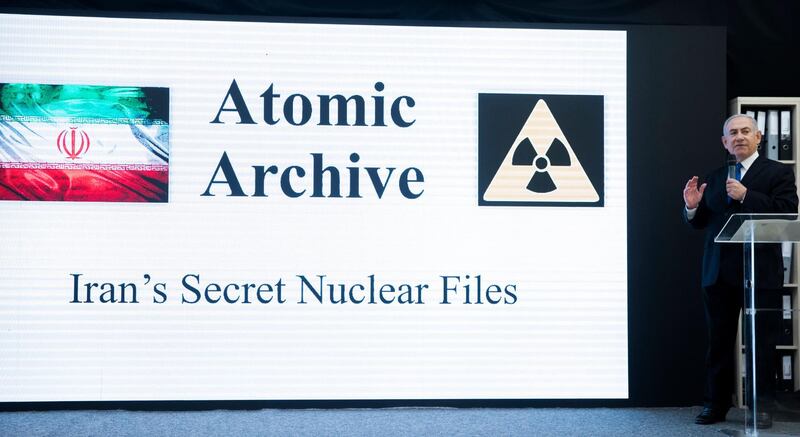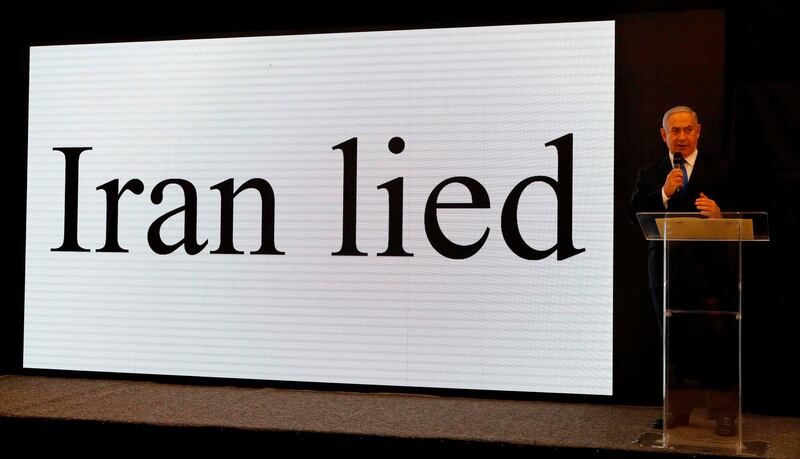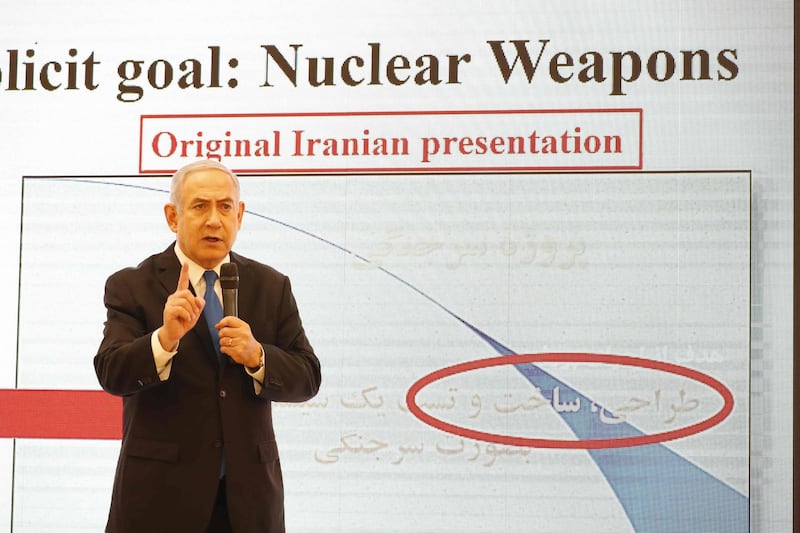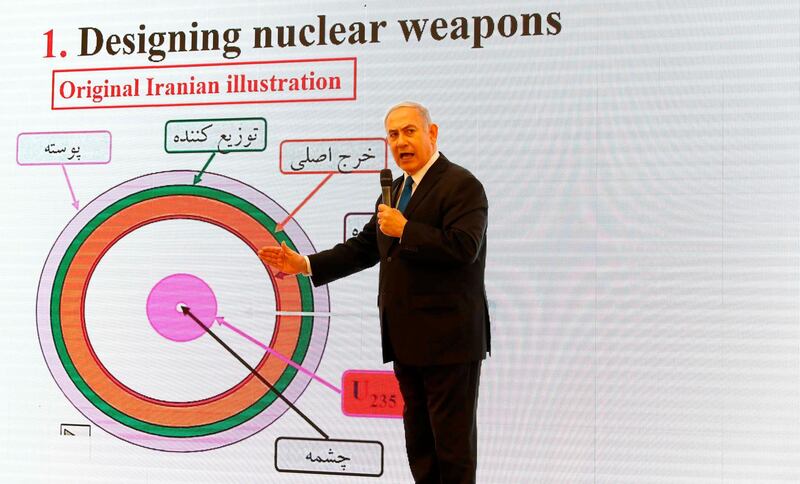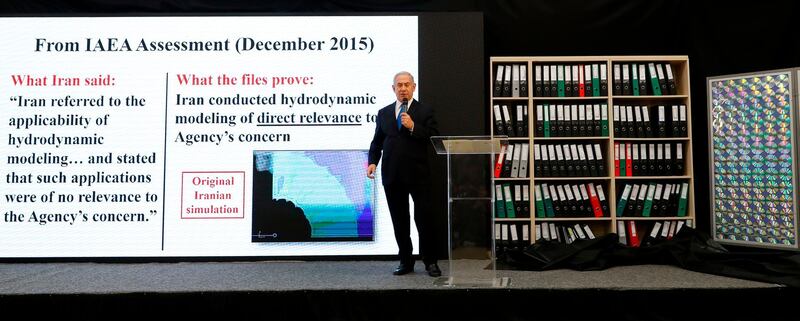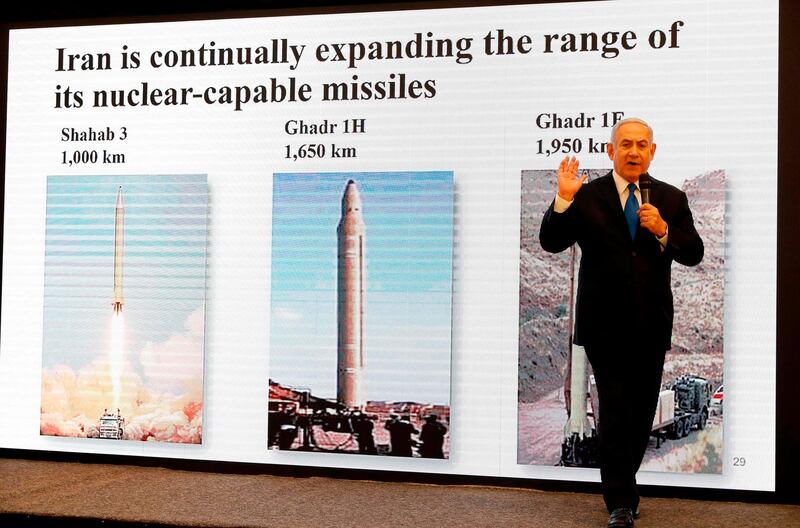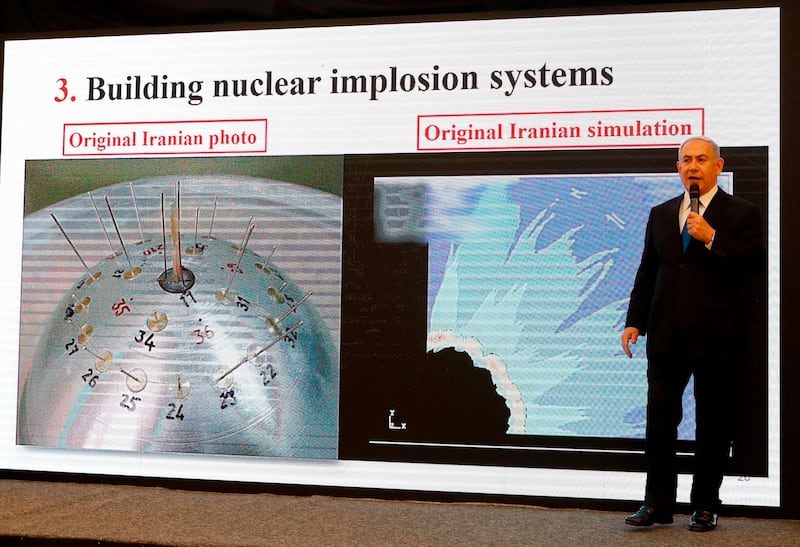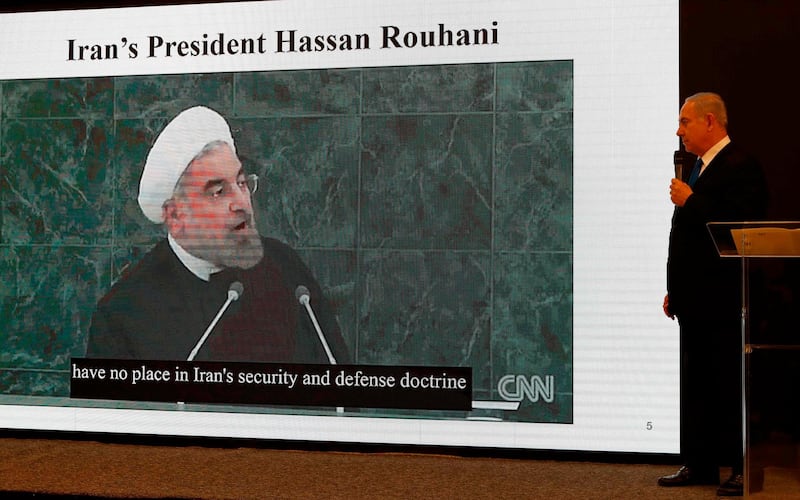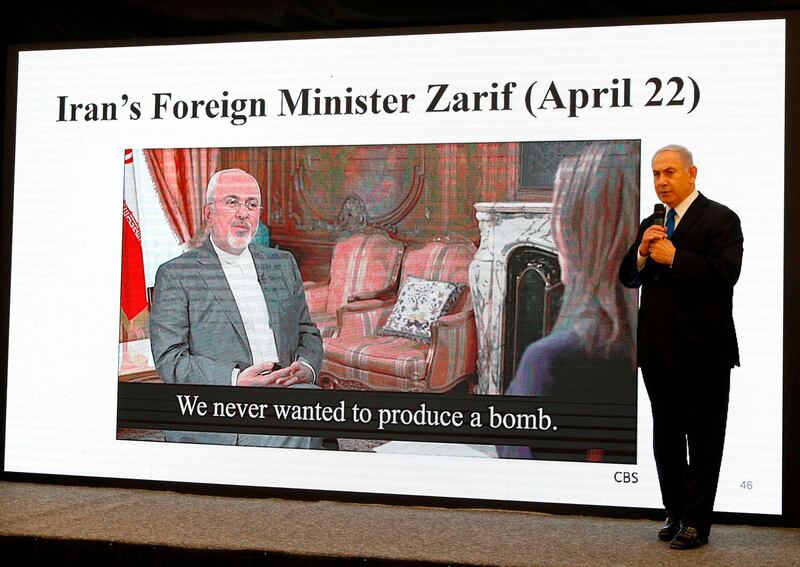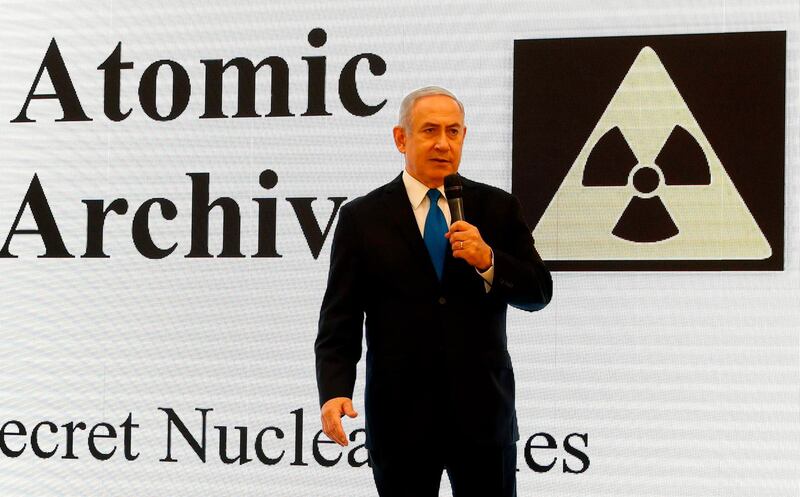For an organisation that has run fake shipping lines and even a bogus holiday resort for deep-sea divers on the Sudanese coastline, the latest intelligence operation by Mossad should have come as no surprise.
Throughout its history Mossad has been a particularly visible secret intelligence operation. It has been willing to see the results of operations exposed in public, and has sometimes even reversed it activities when caught out.
The uncovering of a lock-up where the data trove of Iran’s nuclear programme had been warehoused ranks as one of the agency’s biggest coups. It must have at times come close to the surface. Moving half-a-tonne of materials over 1,600 kilometers from landlocked Tehran is no easy logistical feat.
Even the manner in which the material has now come to light is the product of international intrigue. Intelligence experts believe that Iran uncovered the fact the materials had gone missing two weeks ago. Hours before Benjamin Netanyahu made his dramatic announcement on Monday, Mohammed Javad Zarif, the Iranian foreign minister, tweeted a heavy hint that Tehran knew what was coming.
It is not the first time that Mossad has successfully shown its ability to penetrate the Iranian nuclear programme. It suffered crucial setbacks between 2010 and 2012 when five nuclear scientists were targeted in assassination attempts when magnetic bombs were affixed to vehicles in Tehran’s traffic.
A vehicle metaphor was once used by the Israeli spy master Meir Dagan, when challenged on Mossad’s long track record of assassinations -- a new book estimates that Mossad has carried out 2,700 assassinations over its history.
"In a car, there are 25,000 parts on average,” Mr Dagan said. “Imagine if 100 of them are missing. It would be very hard to make it go. On the other hand, sometimes it's most effective to kill the driver, and that's that."
The image of Adolf Eichmann on trial in Jerusalem in 1960 for the crimes of the death camps is Mossad’s finest hour. Years of work had gone into the operation. Not only in Argentina, where the architect of the Holocaust had fled, but in Germany and Austria where the SS chief still had supporters.
Curiously though Mossad missed its opportunity to also snatch and put on trial Josef Mengele, the Auschwitz doctor, who was under surveillance in Brazil in 1962 but the operation was called off. The agents on his trail were diverted to take out the German scientists working on Col Gamel Nasser’s fast developing Egyptian missile programme.
Frequently the tactics used by Mossad have angered foreign states. The attempted assassination of Ali Hassan Salameh, the alleged leader of the Palestinian Black September group implicated in the Munich attacks, went wrong in Lillehammer, Norway in 1973. A Moroccan waiter Ahmed Bouchikhi was killed by mistake.
_________
Read more
Israel claims to have proof of 'secret' Iran nuclear programme
Iran brands Netanyahu 'scandalous liar' over nuclear archive
Editorial: Iran must never be able to build a nuclear weapon
__________
It was not until 1979 that Mossad killed Salameh, despatching an agent posing as British charity worker Erika Chalmers to Beirut to lure him to his death. A few years later a female spy was in action again as Israeli targeted the nuclear whistleblower Mordechai Vanunu, who was lured from London to Rome by Cheryl Hanin in 1986. Spirited to Israel, he was handed down an 18 year jail sentence for revealing the secrets of Israel’s nuclear plant Dimona.
The use of fake European and other foreign passports is a Mossad trait. The tactic was used in Dubai when Israel targeted the Hamas arms dealer Mahmoud Al Mabhouh. Footage from CCTV showed the agents acting casually carrying tennis rackets in the hotel lobby. It was subsequently revealed the assassins used passports from five countries and led to Britain and Australia expelling some Israeli diplomats.
Al Mabhouh is not the only Hamas figure targeted. The group leader Khaled Mishaal owes his life to King Hussein of Jordan demanding Israel provide the antidote to a poison it administered to Mishaal in his Amman office.
Hizbollah too has found its upper ranks targeted. The death of Imad Mughniyeh in Damascus in 2008 was a text book operation for Mossad.
Ronen Bergman, the author of Rise and Kill First: The secret history of Israel’s targeted assassinations, which was published earlier this year, has confirmed that Israel was at several points plotting to kill Yasser Arafat. The book suggests the leadership was even willing at one point to shoot down an airline. It adds George W Bush forced Ariel Sharon to promise not to kill Arafat at a White House meeting in 2004.
Perhaps the most cynical explanation for what Mossad does was provided by the former defence minister Moshe Yaalon, who joked about the 1998 murder of Palestinian Khalil Al Wazir (Abu Jihad). "I don't understand why they say why we, Israel, are losing the war for minds. If I put a bullet between Abu Jihad's eyes, right in the middle of his mind, doesn't that mean I've won?"
